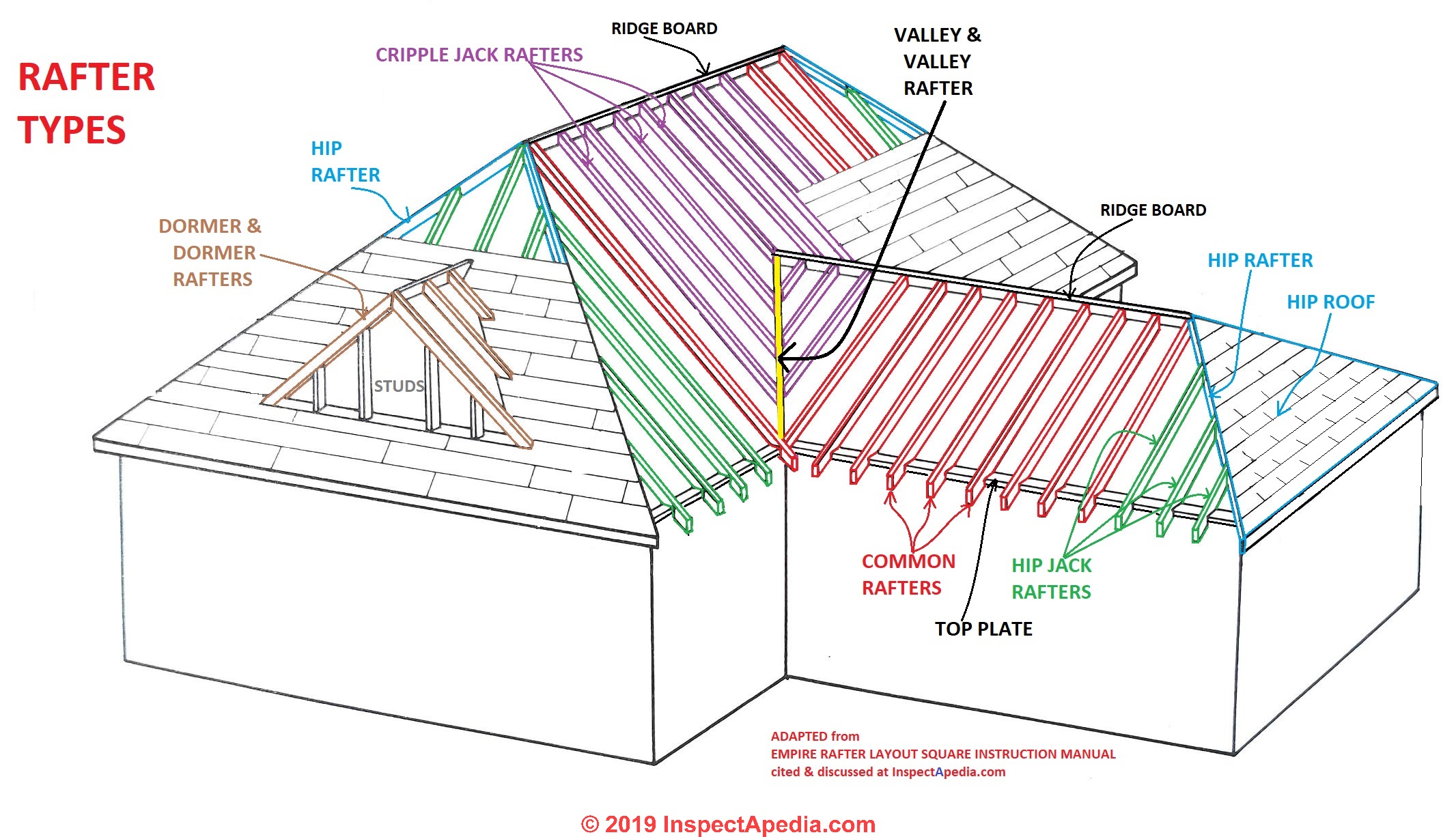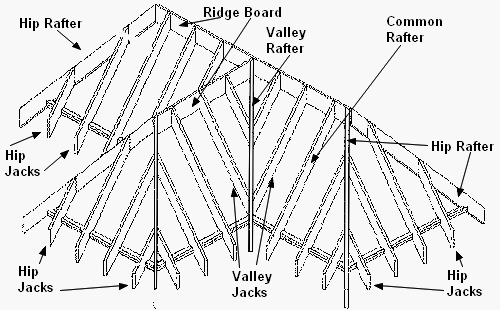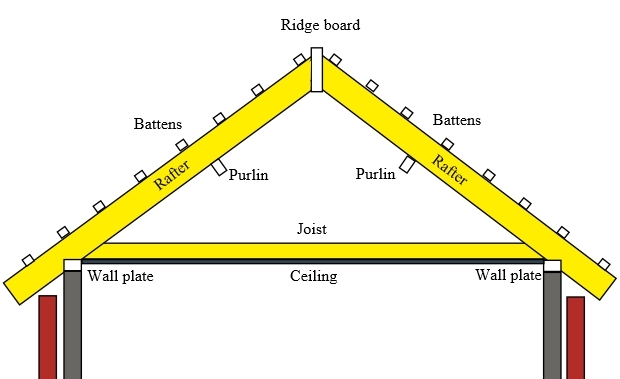If i m using asphalt shingles i always protect the sheathing with ice and water shield first pulling it onto the fascia and rake boards and cover it with trim.
Rafters and roof ridges are normally under.
If a roof ridge is closer than 10 feet to a chimney the stack should be feet higher.
I can see 1 4 to 1 2 inch gap between the ridge board and rafters.
The horizontal board enclosing the ends of the rafter projections or tails is normally referred to as the board.
Most manufacturers specify at least a 4 12 roof pitch for installing them meaning for every foot the rafters extend out from the ridge beam they drop down 4 inches.
In our rafter type drawing above common rafters are drawn in red.
The boards creating the slope of the roof are wider than lumber used to build trusses 2x8s 2x10s and 2x12s are most common in rafters vs.
It is always better to have a large rafter rather than be concerned with a sagging roof.
On some of rafters the bent nails are also visible through the gap.
I noticed that some of the rafters of my home are not joined properly to the ridge board beam.
A rafter is one of a series of sloped structural members such as wooden beams that extend from the ridge or hip to the wall plate downslope perimeter or eave and that are designed to support the roof deck and its associated loads.
If you see sagging rafters recommend stabilization by a qualified contractor.
If you see rafters installed on centers greater than 24 inches look for signs of failure such as sagging of the rafters.
If your project had a rafter length of 8 or less a safe and strong method is to use 2x8 framed 16 on center.
Stabilization typically involves installation of a purlin system.
In home construction rafters are normally made of wood.
To resist thrust the irc calls for a structural ridge required for any roof with a roof pitch less than 3 12 or for each pair of rafters to be securely connected to each other at the lower end of the rafter by a continuous joist.
Exposed rafters are a feature of some traditional roof styles.
Rafters are typically installed on 24 inch centers.
Under the roofing paper felt along the rake edge.
A common rafter runs from the roof ridge to the top of the front or rear wall plate and extend beyond the wall to provide an overhang or eaves or soffit.
Rafter boards are fastened to the ridge board at the peak and the top plate where they join the wall.















































